Profile
Review of Lake Amistad
At over 25 miles long, Lake Amistad has 800 miles of shoreline and some great scenery and archeaological sites to explore. Amistad is surrounded by a landscape rich in prehistoric rock art, a vibrant border culture, along with a wide variety of plant and animal life. Amistad was created as a joint project between the United States and Mexico – the middle of the lake is actually the border between Mexico and the US.
Lake Amistad is known for it's excellent year round water-based recreation including fishing, swimming, scuba diving, and kayaking. The lake is feed by the Rio Grande, Pecos, and Devils Rivers and the water is some of the clearest and cleanest in Texas. It is also one of the deepest lakes in Texas with a maximum depth of 217 feet. The terrain is rocky and arid desert with rolling hills and sheer cliffs.
The same water that draws people to boat and fish today, sustained over 300 generations of hunters and gatherers. They left behind a record of their existence through colorful rock art panels, bits of tools, and fibers preserved for thousands of years by the arid desert climate. The Amistad National Recreation Area is home to dramatic 4,000 year-old rock art some of which is available to view. These mysterious paintings adorn rock shelter walls in the upper reaches of Amistad Reservoir. Depending on the water level, boaters can usually access Panther and Parida Caves and hikers can go on a guided tour at nearby Seminole Canyon State Park & Historic Park.
Map
Sorry, no records were found. Please adjust your search criteria and try again.
Sorry, unable to load the Maps API.
On our only visit to Lake Amistad, we rented a 50 houseboat from Lake Amistad Resort & Marina and explored the Devils river arm of the lake. What a fun trip and you can read more about at this link - houseboating on Lake Amistad. We didn't have time to explore but a tiny portion of this lake but we had an fantastic time hiking up to top of the cliffs, swimming in the clear cool waters, fishing, and enjoying the sunrises and sunsets. Houseboating is the way to see this lake but rent or take a ski boat with you so you can explore further up the rivers and behold the sheer cliffs and hike to the Indian wall paintings.
We didn't have enough time to explore the lake. Panter and Parida caves is the place to go to see the Indian paintings. There are also a number of caves and unusual rock formations to explore. Up the Devils arm, there is one marina and that's about it. You visit Lake Amistad to enjoy time on the water, hike, and explore the caves.
Sorry, we can't help you here - we didn't have time to explore the area.
To the best of our knowledge, there aren't any bars or restaurants on the lake
Lake Amistad could be a skiers or boarders heaven and there are several coves and river arms where you should find some really smooth water! If you are into boarding then you might enjoy this Lake Amistad wake boarding trip that I found while surfing the net
According to Texas Parks & Wildlife, on the Texas side of the lake, all species are managed under current statewide regulations. For recreational anglers fishing Mexican waters, a Mexico fishing license is required for everyone in the boat. Mexico boat permits are no longer required. For information on Mexico's fishing regulations, visit the National Aquaculture and Fishing Commission (CONAPESCA) website.
Mexico licenses can be purchased in Del Rio at Amistad Marine (Highway 90 West, 830/775-0878) or Fisherman's Headquarters (Chevron at the intersection of of 90 & 277 N, 830/774-5670.
Angling Opportunities - Largemouth bass are the most popular and most abundant sport fish in the reservoir. Channel and blue catfish are present in good numbers with an occasional flathead showing up. Striped bass are popular and sought by anglers due to their strong fighting characteristics and their potential for trophy sizes. Frequent stockings by the Texas Parks and Wildlife Department maintain the striper population because they have not successfully reproduced in this reservoir. White bass provide popular seasonal fishing during spring spawning runs. Smallmouth bass are present; anglers report better success with this species in the Devils River arm of the lake.
Fishing Cover/Structure - Amistad Reservoir is dominated by rocky structure. The lake abounds in rock ledges, steep rocky drop offs and rocky points and shorelines. Additional structure is provided by isolated flooded timber. Periodically, flooded terrestrial vegetation (brush) provides important fish habitat following water level increases.
Tips & Tactics - Largemouth bass anglers are most successful during the fall, winter, and spring months. Topwater baits, buzzbaits and spinner baits work well in the early morning and late evening. Crankbaits can be effective along rocky shorelines, points and dropoffs. At midday many anglers turn to plastics such as Texas and Carolina rigged worms or grubs to effectively fish the deeper waters near vegetation or rocky structure. Catfish anglers can find channel and blue catfish throughout the lake. Stinkbait and cutbait work well for both species. Many anglers try to improve catch rates by "baiting" catfish holes with sour grain to attract the catfish. The best action for white bass is during the spring spawning runs. These occur from late January through March as whites migrate up rivers to spawn. Effective baits include rattle traps, jigging spoons and live bait such as minnows.
We know there is some lodging on or near Lake Amistad, but we don't know anything about them. There are a few day use areas and some campgrounds.
Here is a link to Lake Amistad map with ramps and day use information.
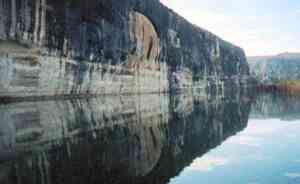

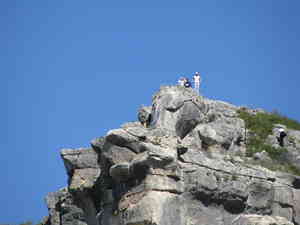

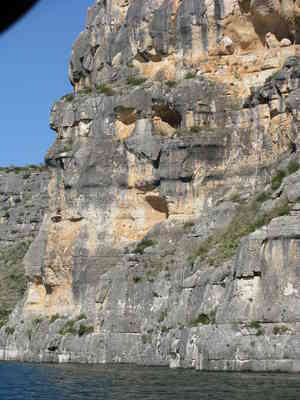
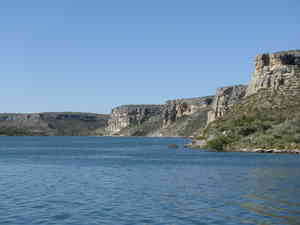
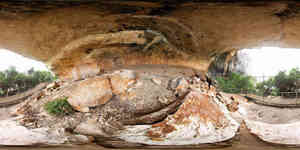

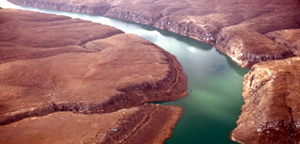
1 Review on “Amistad Reservoir”
This is our official Texas Outside rating